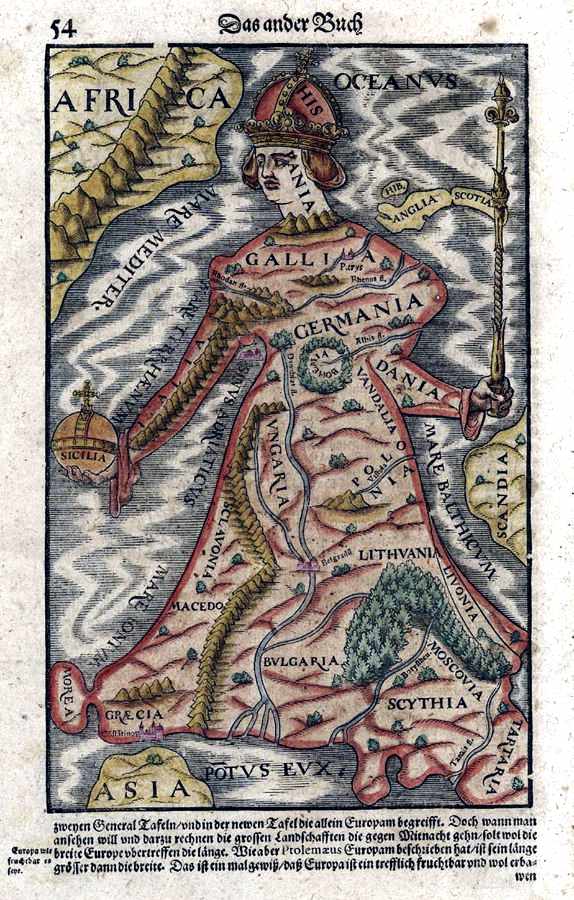Europa regina, Latin for Queen Europe, is the map-like depiction of the European continent as a queen being introduced and made popular during the mannerist period. Europa regina is a young, graceful woman. Her crown, placed on the Iberian peninsula, is shaped after the Carolingian hoop crown. France and the Holy Roman Empire make up the upper part of her body, with Bohemia being the heart. Her long gown stretches to Hungary, Poland, Lithuania, Livonia, Bulgaria, Muscovy and Greece. In her arms, formed by Italy and Denmark, she holds a sceptre and an orb (Sicily).
| Alias Europa Regina |
| Real Names/Alt Names Europa Regina |
| Characteristics Personification, Patriot-themed, The Renaissance, European |
| Creators/Key Contributors Unknown |
| First Appearance Europa Regina map (1537) |
| First Publisher Unknown |
| Appearance List Europa Regina map (1537) by Johannes Bucius Aenicola (Johann Putsch), Cosmographia (1544) by Sebastian Münster – includes early printed versions of the queen-shaped Europe, Europae descriptio (1588) by Heinrich Bünting, Geographia Generalis (1595) by Matthias Quad, Nova et accurata totius Europae descriptio (1600s) |
| Sample Read ○ |
| Description Europa regina, Latin for Queen Europe, is the map-like depiction of the European continent as a queen being introduced and made popular during the mannerist period. Europa regina is a young, graceful woman. Her crown, placed on the Iberian peninsula, is shaped after the Carolingian hoop crown. France and the Holy Roman Empire make up the upper part of her body, with Bohemia being the heart. Her long gown stretches to Hungary, Poland, Lithuania, Livonia, Bulgaria, Muscovy and Greece. In her arms, formed by Italy and Denmark, she holds a sceptre and an orb (Sicily). |
| Source Europa regina – Wikipedia |

